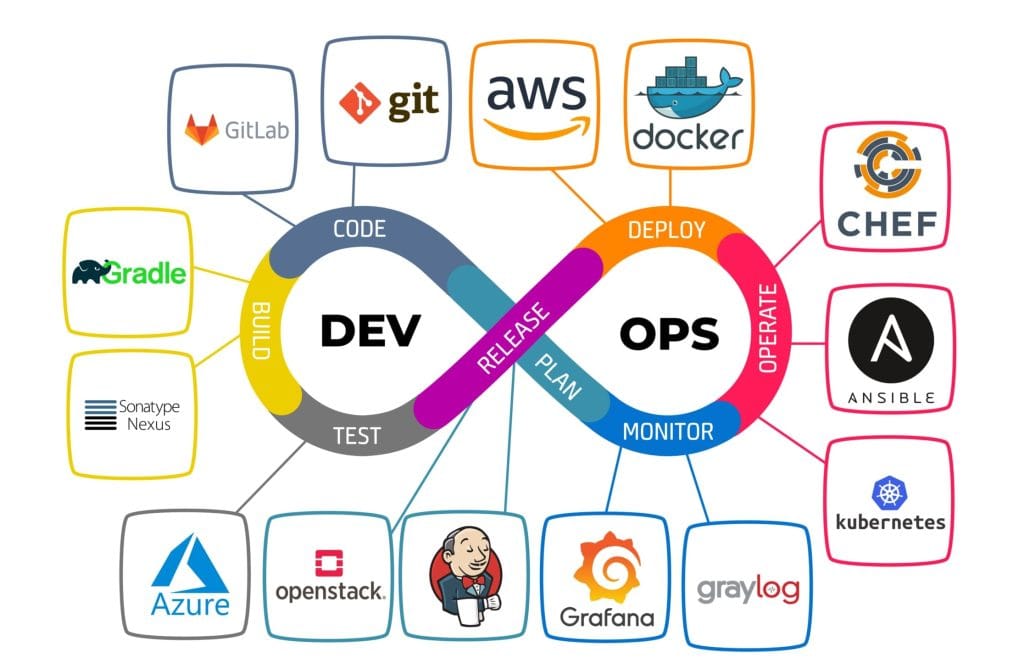Introduction
In the rapidly evolving landscape of software development, the demand for speed and efficiency is paramount. Enter DevOps, a transformative approach that integrates development and operations to enhance collaboration and productivity. DevOps is crucial for optimizing the development pipeline, ensuring faster delivery of high-quality software.
Understanding the DevOps Culture
DevOps represents more than just a set of practices; it embodies a cultural shift within organizations. This shift promotes a collaborative environment where development and operations teams work together seamlessly. By breaking down traditional silos, DevOps fosters a culture of shared responsibility, continuous learning, and improvement, leading to more efficient workflows and quicker problem resolution.
Key Components of DevOps
The core components of DevOps include Continuous Integration (CI), Continuous Delivery (CD), and Continuous Deployment. Each plays a vital role in streamlining the development pipeline:
- Continuous Integration (CI): CI involves integrating code changes into a shared repository multiple times a day. Automated tests are run to detect and fix issues early, reducing integration problems and improving code quality.
- Continuous Delivery (CD): CD ensures that code changes are automatically prepared for release to production. This process includes rigorous testing and validation, enabling rapid, reliable releases.
- Continuous Deployment: This extends CD by automatically deploying every change that passes all stages of the production pipeline. It minimizes manual intervention, allowing teams to focus on innovation and quality.
Tools and Technologies
The success of DevOps heavily relies on the right tools and technologies. Key tools include:
- Jenkins: An open-source automation server that supports building, deploying, and automating projects.
- Docker: A platform for containerizing applications, ensuring consistency across multiple environments.
- Kubernetes: An orchestration tool for managing containerized applications at scale.
- Git: A version control system that tracks code changes and facilitates collaboration.
These tools integrate seamlessly into the development pipeline, enhancing automation, consistency, and efficiency.
Automation in DevOps
Automation is a cornerstone of DevOps, particularly in testing and deployment. Automated testing ensures that code is continuously validated, reducing the risk of defects. Automated deployment accelerates the release process, allowing teams to deliver features and fixes faster. Strategies such as Infrastructure as Code (IaC) further enhance automation, enabling teams to manage and provision infrastructure through code.
Monitoring and Feedback
Effective monitoring is essential for maintaining system reliability and performance. DevOps emphasizes real-time monitoring of applications and infrastructure, providing insights into performance issues and potential bottlenecks. Feedback loops are integral, allowing teams to quickly address issues and refine processes. This continuous feedback ensures a cycle of improvement, enhancing the overall quality and reliability of the software.
Security Considerations in DevOps
Security is a critical aspect of the DevOps pipeline, giving rise to the concept of DevSecOps. Integrating security practices into the DevOps workflow ensures that security is considered at every stage of development. Practices such as automated security testing, vulnerability scanning, and compliance checks help maintain security without compromising speed.
Case Studies: Success Stories
Numerous organizations have successfully implemented DevOps to transform their development pipelines:
- Netflix: By adopting a DevOps approach, Netflix achieved rapid deployment and scalability, ensuring a seamless user experience.
- Etsy: DevOps enabled Etsy to deploy code changes multiple times a day, significantly reducing downtime and enhancing site reliability.
- Amazon: With DevOps, Amazon reduced deployment times from months to minutes, driving innovation and customer satisfaction.
Challenges and Solutions
Implementing DevOps comes with its own set of challenges, including resistance to change, cultural barriers, and tool integration issues. Solutions to these challenges include fostering a collaborative culture, providing continuous training, and selecting the right tools that align with organizational needs. Adopting best practices such as incremental implementation and continuous improvement can also mitigate these challenges.
Future Trends in DevOps
Looking ahead, DevOps is poised to evolve with emerging trends and technologies. Artificial Intelligence (AI) and Machine Learning (ML) are set to play significant roles in automating and optimizing DevOps processes. The rise of serverless computing, GitOps, and increased focus on DevSecOps will further streamline development pipelines, enhancing speed, reliability, and security.
Conclusion
Adopting DevOps practices offers numerous benefits, including improved collaboration, faster delivery, higher quality, and enhanced security. By embracing DevOps, organizations can transform their development and deployment processes, driving innovation and competitiveness.For those looking to delve deeper into DevOps, numerous resources are available to expand your knowledge. Consider reaching out to experts who can help implement DevOps strategies tailored to your projects. Embrace DevOps and unlock the potential to revolutionize your development pipeline.
